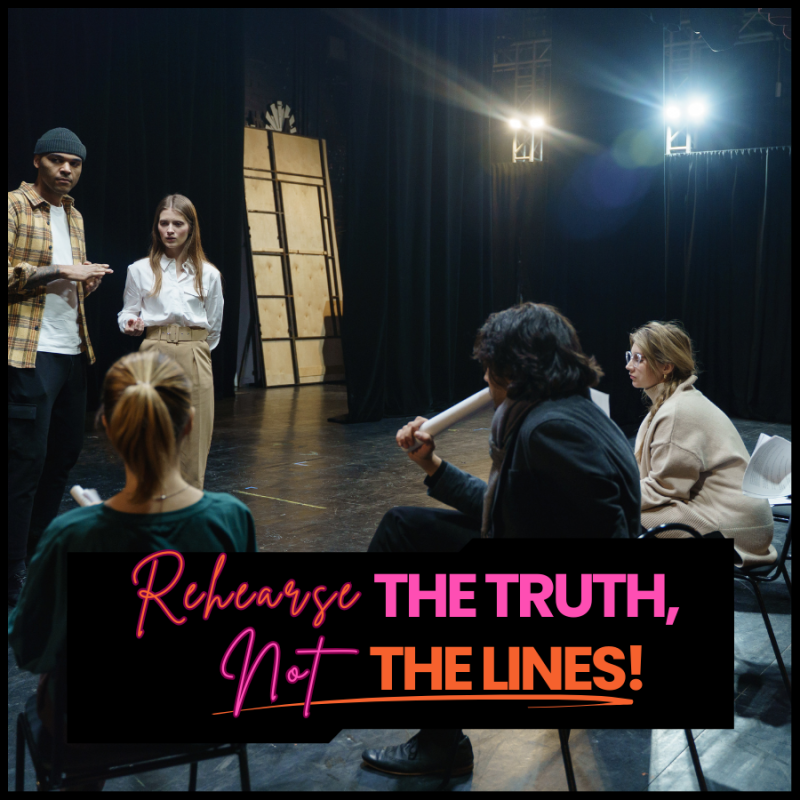When it comes to indie filmmaking, time is tight and budgets are tighter. But one of the most cost-effective ways to elevate your film’s quality is also one of the most overlooked: rehearsal.
Whether you’re working with seasoned professionals or new talent, rehearsals are the key to unlocking natural, compelling performances that resonate with your audience. Let’s break down how to make the most of your rehearsal process—before you ever roll the camera.
1. Redefine What Rehearsal Means
Rehearsals aren’t about memorizing lines or locking in blocking. They’re about discovery.
Use this time to:
- Explore emotional beats
- Uncover character motivations
- Build chemistry between actors
- Test different deliveries and physicality
🎬 Think of it as a lab, not a lecture. You’re not dictating results—you’re facilitating creative exploration.
2. Start with Table Work
Before anyone’s on their feet, gather your cast around the script.
📝 Focus on:
- Reading the script aloud (without acting)
- Discussing subtext and relationships
- Asking character-building questions
- Identifying turning points in each scene
💡 Tip: Encourage actors to make notes and ask questions. This builds trust and helps them take ownership of the material.
3. Rehearse in Sequence
Indie films often shoot out of order, but early rehearsals should happen in chronological script order. This allows your actors to track:
- Emotional arcs
- Shifting dynamics
- Cumulative tension or relief
🎭 When actors understand how each scene fits into the bigger picture, their choices become more rooted and consistent.
4. Focus on Objectives, Not Lines
Actors don’t need to know every word by rehearsal—they need to know what their character wants.
Ask:
- “What are you trying to get from the other person in this scene?”
- “What’s the obstacle?”
- “What’s at stake?”
✅ This keeps rehearsals active and intention-driven, even if lines are loose.
5. Incorporate Improvisation
Encourage actors to improvise within the framework of a scene. This can:
- Reveal hidden emotions or beats
- Loosen up stiff performances
- Uncover dialogue that feels more natural
🎬 Example: Before shooting Before Sunrise, Richard Linklater had Ethan Hawke and Julie Delpy improvise key conversations, which led to the film’s famously authentic tone.
6. Explore Blocking with Flexibility
Blocking (movement within the scene) should emerge from character motivation—not camera needs alone.
👣 Use rehearsal time to:
- Experiment with where actors move and why
- Let the scene breathe before locking camera angles
- Identify physical beats that support emotional ones
Pro Tip: If a scene feels stuck, change the physical setup—it often unlocks new energy.
7. Rehearse with Key Crew
If time allows, bring in your DP, AD, or sound mixer during final rehearsals.
Why?
- Your DP can design shots that support performance
- Your AD can spot timing or logistical issues
- Your sound team can prepare for any technical challenges
🎧 It’s a collaboration, not a silo. When departments rehearse together, the shoot runs smoother.
8. Use Rehearsals to Build Trust
Perhaps the most important function of rehearsal is relationship-building. When actors trust their director, they feel safe enough to take emotional risks.
🎥 Build that trust by:
- Creating a judgment-free space
- Being specific with feedback, not critical
- Celebrating moments of truth, even if imperfect
📣 Reminder: You’re not polishing perfection—you’re cultivating authenticity.
9. Record Rehearsals for Review
If your actors are comfortable, lightly film your rehearsals on a phone or tablet.
🎬 This allows:
- You to review performances without the pressure of a full set
- Actors to self-correct habits
- A chance to compare different choices
Just make sure it’s framed as a tool—not a test.
10. Keep the Energy Alive
Sometimes there’s a gap between rehearsing and filming. Help your cast retain their discoveries by:
- Sending recap notes
- Sharing rehearsal footage
- Encouraging them to keep journals or playlists for their character
🧠 Memory fades—but emotional connections can be reignited.
Directing Begins in Rehearsal
A great director doesn’t just direct on set—they lay the groundwork in rehearsal. This is where:
- Characters take shape
- Chemistry is built
- Emotional truth is discovered
In indie filmmaking, you might not have time for 20 takes. But with strong rehearsals, you may not need them. You’ll get what you need faster, deeper, and more honestly—because you built that foundation in advance.
Transformational Screenwriting

At the Independent Film Arts Academy (IFAA), we believe great performances start with great writing. If you’re looking to deepen your character development and emotional storytelling, grab a copy of Transformational Screenwriting—your go-to guide for crafting scripts that actors can’t wait to bring to life.

